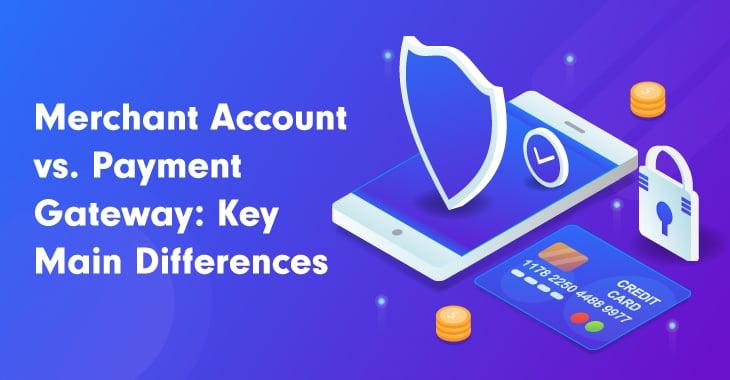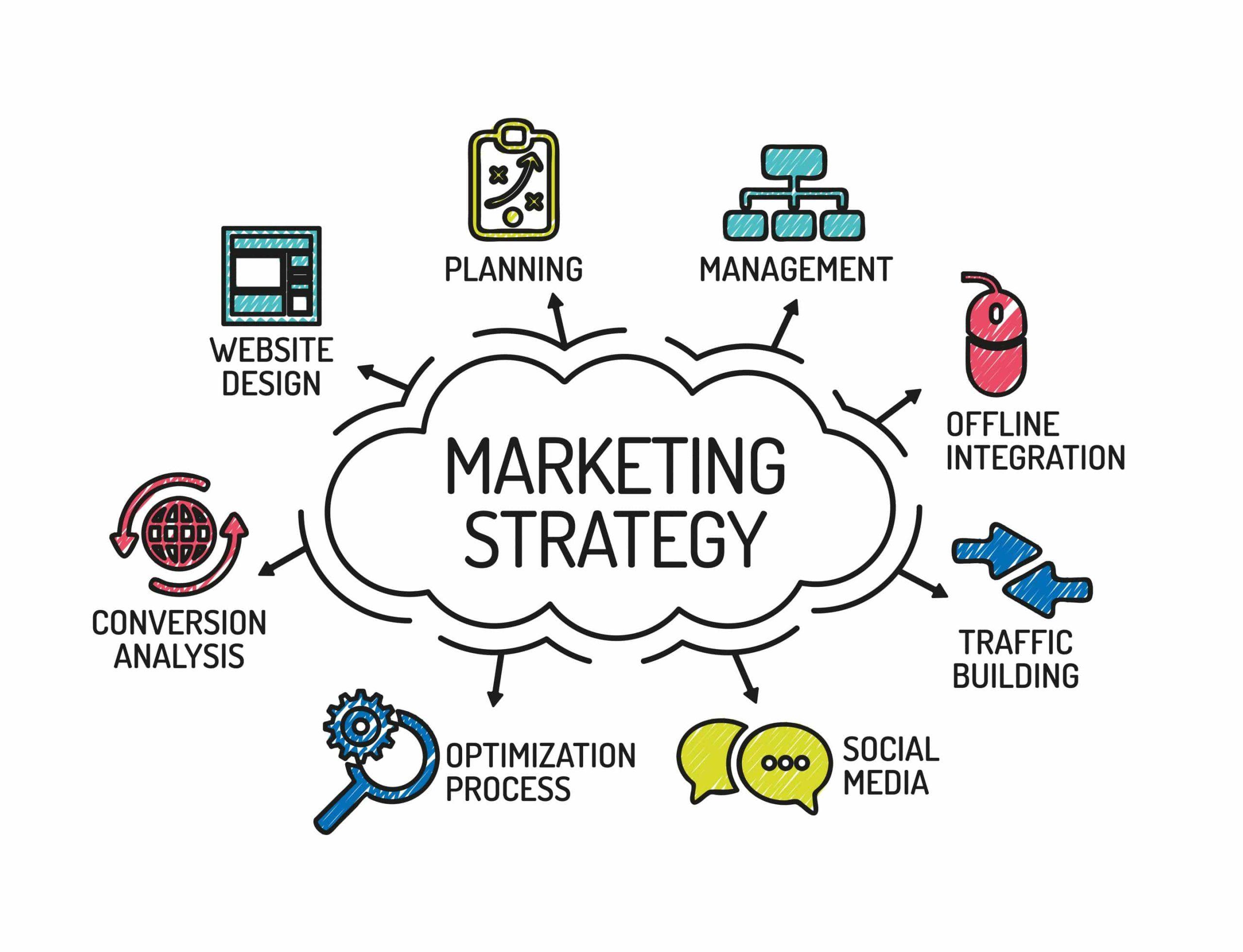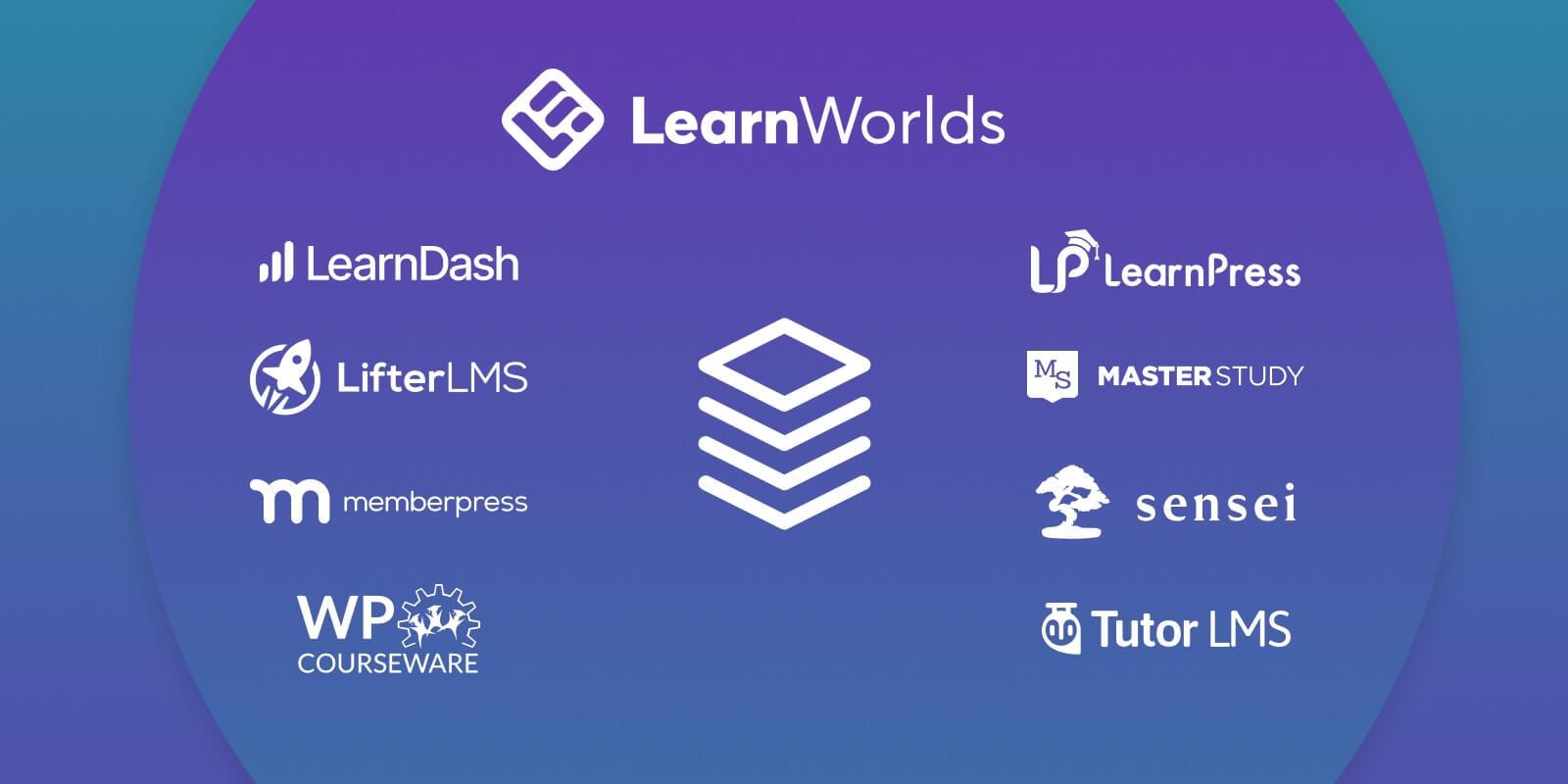Ready to launch your own online courses? Creating a WordPress LMS website is easier than you think! With user-friendly plugins and customizable themes, you can turn your knowledge into a thriving learning platform. Let’s get started!
How to Create a WordPress LMS Website – From Start to Finish
Are you ready to turn your passion for teaching into a thriving online business? If you’ve ever dreamed of sharing your knowledge and skills with the world, creating a WordPress Learning Management System (LMS) website might just be your golden ticket! Whether you’re looking to offer courses in baking, coding, photography, or any other subject, a WordPress LMS site provides the perfect platform to engage students and deliver quality content.
In this step-by-step guide, we’ll walk you through everything you need to know to set up your very own LMS website—from choosing the right themes and plugins to designing your course structure and promoting your content. Not only will we cover the technical aspects, but we’ll also share tips on how to create a captivating learning experience that keeps your students coming back for more. So, grab a cup of coffee, get comfy, and let’s embark on this exciting journey together to transform your ideas into a fully-fledged online learning hub!
Understanding the Basics of an LMS and Its Importance for Your WordPress Site
When it comes to online education, a Learning Management System (LMS) serves as the backbone of your educational initiatives. An LMS is not just a platform; it’s an entire ecosystem designed to facilitate learning and improve the educational experience for both instructors and students. By integrating an LMS into your WordPress site, you can seamlessly deliver courses, track learner progress, and manage educational content, all in one place.
One of the primary reasons to adopt an LMS is the flexibility it offers. Whether you want to create a simple course or a comprehensive program with quizzes, certificates, and multimedia content, an LMS can adapt to meet your needs. This adaptability allows educators to design learning experiences tailored to their audience, enhancing engagement and retention.
Moreover, the importance of user experience cannot be overstated. A well-structured LMS provides intuitive navigation and accessibility, ensuring that learners can easily find and engage with the content. Key features often found in LMS platforms include:
- Course Management: Easily create, organize, and manage courses.
- Progress Tracking: Monitor student performance and completion rates.
- Interactive Elements: Incorporate quizzes, forums, and multimedia for an enriched learning experience.
- Certificates and Badges: Reward learners upon course completion to encourage further engagement.
Furthermore, implementing an LMS enhances your site’s credibility. By offering structured learning and professional course content, you position your site as a trusted resource in your niche. This credibility is essential for attracting new users and retaining existing ones.
To give you a clearer picture, consider the following table, which outlines some popular LMS plugins available for WordPress:
| LMS Plugin | Key Features | Pricing |
|---|---|---|
| LearnDash | Quizzes, Certificates, Course Builder | Starts at $199/year |
| WP Courseware | Drag & Drop Builder, Progress Tracking | Starts at $129/year |
| Sensei | Integration with WooCommerce, Course Analytics | Starts at $129/year |
choosing the right LMS for your WordPress site can significantly enhance the learning experience you offer. By understanding the essential components of an LMS and its relevance to your website, you can make informed decisions that will elevate your educational offerings and attract more users. Embrace the power of an LMS, and you’ll be well on your way to creating a thriving online learning community.

Choosing the Right Hosting Provider for Your WordPress LMS
When it comes to launching your WordPress LMS, selecting the right hosting provider is a crucial decision that can significantly influence your site’s performance and user experience. With a multitude of options available, it’s essential to focus on the features that align with the needs of an LMS. Here are some key factors to consider:
- Performance: Your hosting provider should offer high uptime rates and fast loading times. Look for plans that include SSD storage and Content Delivery Networks (CDNs) to boost speed.
- Scalability: As your user base grows, your hosting needs will evolve. Choose a provider that can easily accommodate growth, whether through more powerful plans or dedicated servers.
- Support: Reliable customer support is vital, especially if you experience technical issues. Opt for a hosting service with 24/7 support and a good reputation for helping customers quickly.
- Security: Since you’ll be handling sensitive user data, ensure your hosting provider offers robust security features, including SSL certificates, malware scanning, and backups.
- WordPress Optimization: Some hosting providers specialize in WordPress and offer features like one-click installs, automatic updates, and pre-installed plugins that facilitate LMS management.
Additionally, it’s wise to evaluate the pricing structure. Many hosting providers offer introductory rates that may increase upon renewal. To help you make an informed choice, here’s a quick comparison of popular hosting options tailored for WordPress LMS:
| Hosting Provider | Performance | Support | Starting Price |
|---|---|---|---|
| SiteGround | Excellent | 24/7 Chat & Phone | $3.99/month |
| Bluehost | Good | 24/7 Support | $2.95/month |
| Kinsta | Outstanding | Premium Support | $30/month |
| A2 Hosting | Very Good | 24/7 Support | $2.99/month |
Ultimately, the right hosting provider will not only support your current needs but also adapt as your LMS grows. Take the time to read reviews, seek recommendations, and even test customer support before making your final choice. The right foundation will set your WordPress LMS up for success!
Picking the Perfect LMS Plugin: A Guide to Your Best Options
When it comes to choosing the right Learning Management System (LMS) plugin for your WordPress website, the options can be overwhelming. With varying features, pricing models, and compatibility, you want to ensure that you select an LMS that aligns perfectly with your educational goals and technical needs. Here are some tips to consider as you explore your best options:
- Identify Your Needs: Before diving into options, outline what features are crucial for your courses. Do you need user management, quizzes, or multimedia support? Make a checklist to guide your decision.
- Scalability: Consider how the LMS will grow with your needs. If you plan to expand your course offerings or the number of students, ensure the plugin can accommodate that growth.
- Integration Capabilities: Look for plugins that integrate seamlessly with other tools you use, such as payment gateways, email marketing services, and analytics tools. Integration can save you time and enhance your site’s functionality.
- User Experience: A smooth and intuitive interface for both instructors and learners is vital. Choose an LMS that prioritizes user experience, making it easy for students to navigate and learn.
Next, you’ll want to consider the support and community around the LMS plugin. A thriving community can be invaluable, offering tutorials, user forums, and troubleshooting assistance. Look for plugins that have:
- Comprehensive Documentation: Good documentation can help you set up and troubleshoot without needing extensive technical skills.
- Active Support Channels: Check if there’s a support team available to assist users with queries and issues as they arise.
- User Reviews and Ratings: Read what others have experienced with the plugin. Real user feedback can provide insight into reliability and performance.
To help visualize your choices better, here’s a simple comparison table of some popular LMS plugins:
| Plugin | Key Features | Pricing |
|---|---|---|
| LearnDash | Advanced quizzing, certificates, multi-tier courses | Starts at $199/year |
| Teachable | Built-in payment processing, sales pages | Free plan, premium plans from $29/month |
| LifterLMS | Member management, course bundles, gamification | Free core, paid add-ons |
Lastly, don’t forget the importance of testing. Many LMS plugins offer free trials or demo versions, allowing you to explore their interfaces and features before committing. Take advantage of these options to get a feel for the plugin and see how it matches your needs.
Designing an Engaging User Experience for Your Online Courses
Creating an engaging user experience is pivotal for the success of your online courses. A well-designed Learning Management System (LMS) on WordPress can be the backbone of this experience. Start with a clean, intuitive layout that makes navigation effortless. Users should feel comfortable exploring your content without confusion. Utilize clear menus and logical course categorization to guide them seamlessly.
Next, incorporate multimedia elements to enrich the learning experience. Videos, audio clips, and images can break up text and keep students engaged. Consider embedding a variety of content types such as:
- Interactive quizzes: Gauge comprehension and provide instant feedback.
- Discussion forums: Foster community and encourage collaboration among students.
- Downloadable resources: Provide supplementary materials that enhance learning.
Design your course pages with a focus on mobile responsiveness. With more learners accessing content via smartphones and tablets, ensure your layout adapts to different screen sizes. This way, you can maintain accessibility and usability across all devices. Utilize WordPress plugins that support responsive design to streamline this process.
Another key aspect is progress tracking. Implement a feature that allows users to see their advancement within a course. This can be achieved through visual progress bars or completion badges. Not only does this motivate learners, but it also provides a sense of accomplishment as they navigate through the modules.
| Feature | Benefit |
|---|---|
| Interactive quizzes | Enhances engagement and retention |
| Mobile responsiveness | Improves accessibility for all users |
| Progress tracking | Boosts motivation and accountability |
Lastly, don’t underestimate the power of feedback systems. Encourage learners to provide comments on the course materials and their overall experience. This feedback can be invaluable in refining your content and user experience. Consider using short surveys or ratings that can easily be integrated into your WordPress site.
Creating Compelling Course Content That Keeps Students Coming Back
Creating a course that resonates with students is essential for maintaining engagement and ensuring they return for more. First and foremost, it’s crucial to understand your audience. Conduct surveys or polls to discover what your students are genuinely interested in. This information will guide you in tailoring your content to meet their needs and preferences.
Once you have a clear understanding of your audience, focus on creating high-quality materials. This can include:
- Engaging videos: Use storytelling techniques to make lessons memorable.
- Interactive quizzes: Assess understanding while keeping the learning experience fun.
- Downloadable resources: Provide additional materials that students can refer to later.
Another vital aspect is the structure of your courses. Break your content into manageable modules that are easy for students to digest. For example, consider using a table format to outline your course content:
| Module | Topics Covered | Duration |
|---|---|---|
| Module 1 | Introduction to the Topic | 30 minutes |
| Module 2 | In-Depth Analysis | 1 hour |
| Module 3 | Practical Applications | 45 minutes |
Don’t forget the importance of feedback. Encourage students to share their thoughts on the course content and delivery. This can be done through forums, comment sections, or feedback forms. Analyzing this feedback will allow you to continuously improve your courses and keep your content fresh and relevant.
Lastly, foster a sense of community among your students. Create discussion boards or group projects that encourage interaction. When students feel connected, they’re more likely to stay engaged and return for future courses. By focusing on these elements, you’ll be on your way to creating compelling course content that not only attracts students but also keeps them coming back for more.

Setting Up Payment Gateways and Pricing Structures for Your Courses
When it comes to selling your courses online, having a reliable and flexible payment gateway is essential. It not only facilitates smooth transactions but also enhances the user experience, making it more likely that students will enroll in your courses. There are several popular payment gateways you can integrate with your WordPress LMS website, each offering unique features. Here are a few to consider:
- PayPal: Widely recognized and trusted, it allows users to pay using their PayPal account or credit/debit cards.
- Stripe: Known for its user-friendly interface, Stripe supports a range of payment methods and currencies, making it a global choice.
- Authorize.Net: A robust solution that provides advanced fraud protection and recurring billing options.
- Square: Perfect for businesses that also sell in person, it offers seamless integration for both online and offline sales.
Once you’ve chosen the right payment gateway, it’s time to set up your pricing structure. Consider the following options to cater to different types of learners:
- One-Time Payment: Ideal for self-contained courses where users pay once for full access.
- Subscription Model: Great for ongoing access to a library of courses, allowing for recurring revenue.
- Payment Plans: Help students manage costs by allowing them to pay in installments.
- Free Trials: Attract new users by offering a limited-time free access to your course content.
To make your pricing transparent and appealing, consider creating a pricing table that clearly outlines what each payment option includes. Here’s a simple example:
| Plan | Price | Access Duration | Key Features |
|---|---|---|---|
| Basic | $99 | Lifetime | Access to all course materials |
| Pro | $29/month | Ongoing | Access to all courses + new content monthly |
| Premium | $199 | Lifetime | All features + 1-on-1 coaching session |
ensure that your payment process is as easy as possible. A complicated checkout can lead to cart abandonment. Make sure to:
- Minimize Steps: Keep the checkout process simple and straightforward.
- Use Clear Calls to Action: Guide users with prominent buttons to complete their purchase.
- Offer Multiple Payment Options: Cater to various preferences to maximize conversions.
By thoughtfully setting up your payment gateways and pricing structures, you not only simplify the purchasing process for your students but also enhance your potential for increased sales. With the right tools and strategies in place, you’re well on your way to building a successful online course business.

Optimizing Your WordPress LMS for Search Engines and Traffic
To ensure your WordPress Learning Management System (LMS) attracts the right audience, optimizing it for search engines is essential. This involves a blend of technical strategies, keyword research, and user-friendly design. Let’s explore how you can effectively improve your site’s visibility and traffic.
Keyword Research
Start by identifying the keywords your target audience is searching for. Utilize tools like Google Keyword Planner or SEMrush to find high-traffic, low-competition keywords related to your LMS. Focus on long-tail keywords that reflect user intent, such as:
- Best WordPress LMS plugins
- How to create online courses
- Tips for engaging e-learning content
On-Page SEO Optimization
Once you have your keywords, integrate them naturally throughout your site. This includes:
- Title Tags: Ensure your keywords are in the title of your pages.
- Meta Descriptions: Write compelling descriptions that include primary keywords.
- Headings: Use headings (H1, H2, H3) to structure your content and include relevant keywords.
- Image Alt Text: Optimize images by adding descriptive alt text with keywords.
Quality Content Creation
Creating valuable content is paramount. Consider developing blog posts, tutorials, and guides that educate your audience. Here’s how to keep your content engaging:
- Use visuals like images and videos to break up text.
- Incorporate infographics to summarize data or concepts.
- Encourage user interaction through quizzes or discussion boards.
Mobile Optimization
With the rise of mobile traffic, ensuring your LMS is mobile-friendly is crucial. Use responsive design themes that adapt to different devices. Test your site’s mobile performance and load speed using tools like Google PageSpeed Insights. A mobile-optimized site not only enhances user experience but also boosts your SEO ranking.
Building Backlinks
Backlinks from reputable sites can significantly improve your LMS’s authority and search engine ranking. Consider:
- Guest blogging on related education or technology websites.
- Collaborating with influencers in the e-learning space.
- Creating shareable resources like e-books or webinars that others may link to.
Analytics and Continuous Improvement
don’t forget to monitor your progress. Use Google Analytics to track your traffic sources, user behavior, and conversion rates. Analyze the data to determine what’s working and what needs improvement. Regular adjustments based on analytics insights will help you stay ahead in the competitive landscape of online learning.

Implementing Effective Marketing Strategies to Promote Your Courses
When it comes to promoting your courses online, having a well-thought-out marketing strategy is crucial. You want to ensure that your target audience not only discovers your offerings but is also compelled to enroll. Here are some effective strategies to amplify your course promotion:
- Social Media Marketing: Leverage platforms like Facebook, Instagram, and LinkedIn to share engaging content about your courses. Use eye-catching graphics and compelling calls-to-action to drive interest and engagement.
- Email Marketing: Build an email list of potential students and regularly send out newsletters. Highlight course benefits, student testimonials, and exclusive promotions to encourage sign-ups.
- Content Marketing: Create valuable content related to your course topics. Blog posts, articles, or videos can establish you as an authority in your field and attract learners interested in your expertise.
- Webinars and Free Trials: Host webinars or offer free trial classes to give potential students a taste of what they can expect. This creates an opportunity for direct engagement and showcases the value of your courses.
In addition to these strategies, consider utilizing a structured approach to monitor and adapt your marketing efforts. Keeping track of what works and what doesn’t can significantly improve your outreach:
| Strategy | Key Metrics | Adjustments |
|---|---|---|
| Social Media Ads | Click-Through Rate (CTR) | Change ad visuals and targeting. |
| Email Campaigns | Open Rate | Test different subject lines. |
| Content Engagement | Comments and Shares | Focus on trending topics. |
| Webinar Participation | Attendance Rate | Adjust timing and promotion channels. |
Lastly, don’t underestimate the power of student testimonials and case studies. Showcasing success stories from previous learners can significantly enhance credibility and attract new enrollments. Encourage your students to share their experiences and feature these testimonials prominently on your website and marketing materials.
Implementing these strategies with consistency and creativity will position your courses in front of the right audience, ultimately leading to higher enrollment rates and a thriving online learning community.

Leveraging Analytics to Improve Your LMS and Boost Student Success
In the realm of education, harnessing the power of analytics can be a game-changer for your Learning Management System (LMS). By tapping into the data generated from student interactions, you can identify trends, enhance course offerings, and ultimately drive student success. Here’s how you can effectively leverage analytics in your LMS.
First and foremost, it’s crucial to understand the types of data you can collect. Consider focusing on:
- Engagement Metrics: Track how often students log in, the time spent on courses, and participation in discussions.
- Assessment Performance: Analyze quiz and exam scores to identify areas where students may struggle.
- Feedback and Surveys: Use direct feedback from students to gauge their satisfaction and areas for improvement.
Once you have this data, the next step is to interpret it effectively. A visual representation can often clarify complex information. Consider using graphs and charts to showcase trends and comparisons. For instance, you might create a table to display average quiz scores across different courses:
| Course Name | Average Quiz Score (%) | Completion Rate (%) |
|---|---|---|
| Intro to Programming | 85 | 90 |
| Advanced Mathematics | 75 | 80 |
| Digital Marketing Basics | 92 | 95 |
With these insights, you can tailor your courses to better meet the needs of your students. If you notice consistently low scores in a particular area, it might be time to revisit your course materials or provide additional resources, such as tutoring or supplementary videos. Furthermore, personalized learning paths can be designed for students based on their performance analytics—ensuring everyone has the best chance to excel.
don’t forget to communicate your findings and adjustments back to your students. Transparency not only fosters trust but also encourages students to take ownership of their learning journey. Regularly share updates on course enhancements or highlight changes made in response to student feedback—showcasing your commitment to their success.

Ensuring Ongoing Support and Maintenance for Your WordPress LMS
Building a WordPress Learning Management System (LMS) is just the beginning; the success of your platform largely hinges on the support and maintenance you provide afterward. To ensure that your LMS runs smoothly and remains relevant, consider the following strategies:
- Regular Updates: Consistently update your WordPress core, themes, and plugins to protect your site from vulnerabilities and to take advantage of new features.
- Backup Solutions: Implement a robust backup strategy to prevent data loss. Use plugins like UpdraftPlus or BackupBuddy to automate this process.
- Performance Monitoring: Use tools like Google PageSpeed Insights and GTmetrix to keep an eye on your website’s performance. A slow-loading site can deter students from engaging with your content.
- Security Measures: Install security plugins such as Wordfence or Sucuri to safeguard your LMS against potential threats. Regularly scan for malicious activities and vulnerabilities.
- User Support: Establish a responsive support system so that students can easily report issues or seek help. This could be through forums, chatbots, or email support.
Additionally, consider creating a maintenance schedule that includes:
| Task | Frequency | Responsible Party |
|---|---|---|
| Core Updates | Monthly | Admin |
| Backup | Weekly | Admin |
| Security Check | Bi-Weekly | Admin/Security Plugin |
| Performance Review | Monthly | Admin/Developer |
| User Feedback Analysis | Quarterly | Support Team |
Engaging with your users through regular feedback is crucial. Create surveys or polls to understand their experience and gather suggestions for improvements. This not only enhances user satisfaction but also fosters a community around your LMS.
Lastly, consider investing in ongoing training for your team. Keeping up with the latest trends and technologies in online education can give your LMS a competitive edge. Whether it’s through online courses or industry conferences, continuous learning should be a part of your maintenance strategy.
Frequently Asked Questions (FAQ)
Q&A: How to Create a WordPress LMS Website – From Start to Finish
Q1: What exactly is an LMS website?
A: Great question! An LMS, or Learning Management System, is an online platform that allows you to create, manage, and deliver educational courses. Think of it as your digital classroom where students can access content, take quizzes, and track their progress—all in one place.
Q2: Why should I choose WordPress for my LMS?
A: WordPress is incredibly versatile and user-friendly. With its vast array of plugins and themes, you can customize your LMS to fit your unique needs without needing to be a tech wizard. Plus, it’s cost-effective and has a large community for support, which can be a lifesaver as you build your site.
Q3: What are the first steps to creating my LMS website?
A: Start with the basics! First, you’ll need to decide on a domain name and hosting service. Choose a name that reflects your brand and is easy to remember. Once you’ve got that set up, install WordPress and select an LMS plugin—options like LearnDash or LifterLMS are popular choices that can supercharge your site!
Q4: How do I choose the right LMS plugin?
A: Look for plugins that offer the features you need. Do you want to sell courses? Look for eCommerce integration. Need quizzes? Ensure the plugin supports assessments. Dive into reviews and maybe even try out a few demos. The right plugin can make or break your LMS experience!
Q5: Can I customize the look and feel of my LMS?
A: Absolutely! One of the best parts of using WordPress is the level of customization available. You can choose from numerous themes specifically designed for LMS websites, or you can use a page builder like Elementor to create a unique design that resonates with your brand.
Q6: What kinds of content can I include in my courses?
A: The sky’s the limit! You can add video lectures, PDF resources, quizzes, assignments, and even discussion forums to facilitate interaction. Mixing various content types keeps students engaged and helps cater to different learning styles.
Q7: How do I manage and track student progress?
A: Most LMS plugins come with built-in tracking features. You can monitor student progress, completion rates, and quiz scores, giving you valuable insights into how learners are interacting with your material. Plus, you can provide certifications for course completion to boost motivation!
Q8: What about marketing my LMS website?
A: Once your LMS is up and running, it’s time to spread the word! Utilize social media, create a blog, or even offer free mini-courses to attract learners. Building an email list can also be a powerful way to communicate with your audience and keep them engaged.
Q9: Is it hard to maintain my LMS website after it’s built?
A: Not at all! WordPress is designed for easy management. Regular updates and backups are essential, but many hosting services and plugins offer automated solutions to simplify this process. Just dedicate a little time each week to check in, and you’ll be golden!
Q10: Any final tips for someone starting an LMS website?
A: Definitely! Start small and focus on creating quality content. Don’t overwhelm yourself with too many features at once. Gather feedback from your students and be open to making improvements. Remember, building a successful LMS is a journey, and consistency is key. You’ve got this!
Creating a WordPress LMS website can seem daunting, but with the right tools and mindset, it can be a rewarding venture that opens doors to countless learners. So, are you ready to take the plunge? Let’s get started!
In Summary
And there you have it! You’ve just taken a deep dive into the world of creating a WordPress LMS website, and now you’re equipped with all the tools and knowledge to bring your vision to life. From selecting the right theme and plugins to designing engaging courses and managing your users, you’ve mastered the essentials that will set you on the path to success.
Remember, building an LMS website is more than just a technical endeavor; it’s about creating a space for learning, sharing knowledge, and making a positive impact on your learners. Don’t shy away from experimenting with different features and designs—your unique touch is what will make your platform truly shine.
So, what are you waiting for? Dive in, unleash your creativity, and start crafting that amazing learning experience. The world is eager for what you have to offer, and with your new skills, you’re ready to make a difference. If you have any questions or need further guidance, feel free to reach out. Happy building, and here’s to your success in the exciting journey ahead!




